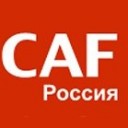The report is the first attempt of its kind to capture a comprehensive picture of foundations in Russia. It combines statistical data, results of quantitative and qualitative research, expert opinions on the environment for foundations and some prognosis of how the foundations sector will develop in the future. The report also names the most significant results of 2010.
Why this report was needed? Despite the significant growth of the foundation sector, there was very little reliable data available so it was pretty hard to comprehend the size of the sector, both in terms of number of institutions and funds involved. The Russian legislation and practice takes a very broad view on the idea of foundations when practically any charity can be named a foundation, so it is hard to distinguish foundations as donor organisations from other NGOs.
The report takes a view that foundations usually come in five different forms: private foundations, corporate foundations, community foundations, endowments (these can belong to universities, for example) and fundraising foundations (a widespread type of institution that collects donations from the public to fund emergency needs of individuals, mostly medical assistance).
The most topical findings of the report include:
- With great efforts, the researchers managed to establish that there are about 300 active foundations in Russia compared to 900 listed in the government’s register. Others either exist on paper only or refused to cooperate.
- 13% of foundations are funded by a single private donor/family and 13% by a single company or a group of companies; the other 74% do not have a principal source of funding.
- The majority of foundations are based in Moscow, obviously excluding the community foundations that are located in 15 regions of Russia.
- Only 14% of foundations work exclusively as grantmakers, while the majority (63%) combine operational and grantmaking activities.
- Foundations work on average in three programme areas, the most popular being assistance to vulnerable groups (mostly children in need), education, culture and healthcare. For private foundations, education comes top.
- Finally, the 100 foundations that were studied in more detail cumulatively managed 23 billion rubles (US$800 million) in 2010.
In general, we can sadly sum up that foundations are few and small. This probably true for the whole charitable sector but given that foundations are institutions that are supposed to be long-term and work strategically, the figures are very disappointing. This negative side is balanced by good news from the report: since 2008 the number of publications about philanthropy and charitable giving in the media increased by 60% – 95% of them being either neutral (news reports mostly) or positive. We can only hope that a positive change in external environment and public perception will translate into real growth of philanthropic institutions.
Finally, I would like to mention that Olga Alexeeva was named by the report as the person of the year, and her contribution to the development of Russian philanthropy was noted in the foreword to the report.
To be continued: in my next post I will write about the trends described in the report.
Maria Chertok is director of CAF Russia and a board member of the Russian Donors Forum







Comments (3)
The report is available in Russian only here: http://www.donorsforum.ru/_files/11_1532.pdf
Is the report available for download? If so, where? Thanks!